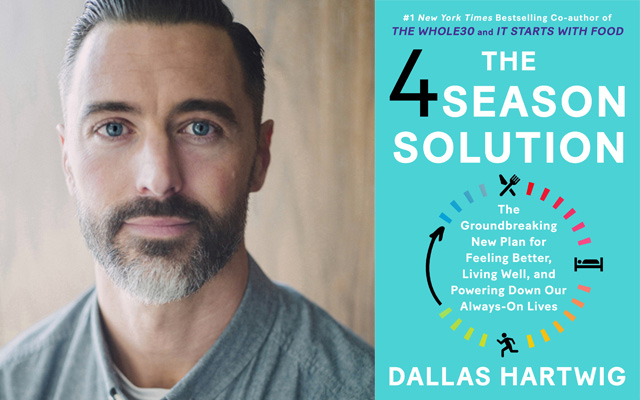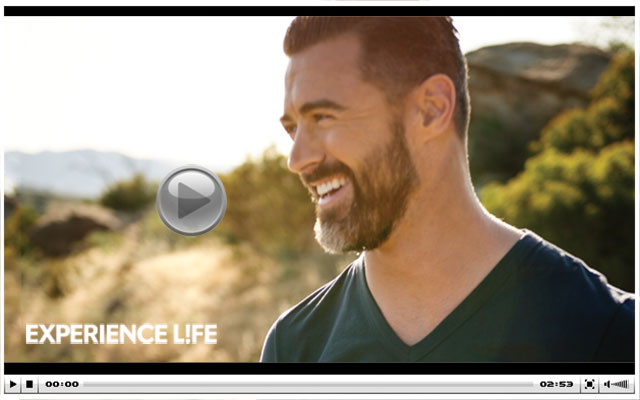Have you ever stopped and wondered about the expression “let’s keep in touch”? We say it all the time, but it rarely involves any actual touch. Usually, it’s an expression that initiates a period of zero physical contact. “Let’s keep in touch,” you say to a close friend who’s about to move, or to a new acquaintance you’ve just met. This used to mean, “Let’s contact one another via telephone or handwritten letter.” Nowadays, it entails following or friending someone on social media.
During my decade of perpetual summer living, which roughly corresponded to my mid-20s through my mid-30s, I kept in touch with a lot of people. I relished all my spring- and summer-style friendships, using text message and social media to receive data about my “friends’” lives. Then I started reading Brené Brown, a leading authority on courage, authenticity, and vulnerability. “Owning our story can be hard,” says Brown, “but not nearly as difficult as spending our lives running from it. . . . Only when we are brave enough to explore the darkness will we discover the infinite power of our light.”
For all my friends and acquaintances, I came to realize that no one really knew me, as I’d been running and avoiding my own messy darkness for so long. I didn’t have a particularly close relationship with my parents. I had friends, and some wonderful, amazing people in my life. But, I had carefully constructed the narrative about myself that I wanted everyone to see — leaving out the uglier and messier parts.
Following this gradual realization, I took some small risks and gradually began to peel away some of the emotional armor protecting me. This happened via a return to personal, social rhythmicity, as I began a fall-like process of contraction and distillation, selecting which friendships I wanted to maintain, and which ones I could gently let go of. I then visited those most important people face-to-face or brought them to visit me. And, in the presence of people I trusted, I began revealing more intimate parts of myself.
During my mid-30s, I contemplated a career change and talked openly with a few select friends about my fears of failure. It was terrifying at first, because like everyone who decides to bare their tender, deeper selves, I feared abandonment and rejection. These conversations also felt awkward and contrived initially — like the feeling you get when you’ve not been to the gym for a long time. “This is supposed to be good for me,” you think, gazing around, feeling intimidated by all the equipment, with the regular gym-goers’ ease further highlighting your own sense of insecurity.
Nonetheless, I pushed through the discomfort and decided to invest more deeply in a handful of meaningful connections. And I made some people uncomfortable. “Why are you telling me this?” some people asked when I divulged persona linformation about myself. They weren’t trying to be mean. They were simply as unpracticed at vulnerability as I was, and my efforts struck them as confronting and unsettling.
Now, at 40, I’m still learning how to prioritize and honor those closest connections amid the more spring and summer types of connections in my life. It’s an ongoing process. Sometimes it manifests in my decision to decline to attend yet another big social event and say, “No, thank you,” opting instead to re-invite a close circle of friends I’d recently had over to sit around the fireplace and pick up the conversation that we didn’t get to finish last time. Other times, it’s a decision to decline a conference in the middle of winter and stay home with my loved ones.
The more I move toward self-reflection and lean into my own symbolic fall, the more inspired I am to move even further in the direction of home, intimacy, and rootedness, and the better I feel. It feels like being exactly where I’m supposed to be for the first time in my life.
How to Find Your Tribe
Perhaps my experience resonates with you. Whether it does or not, the best way to get in sync socially is to start noticing your behaviors. Take a moment and reflect: Do you feel like you have a tribe? Do you feel profound, deep belonging with a close circle of people who know your deepest secrets, fears, and dreams? If not, is this because you haven’t revealed these personal details to others, or because you don’t know them yourself?
To know ourselves, we must know our history. In other words, prior to introspection, I recommend retrospection. Examine your childhood experiences and past romantic relationships. What tendencies do you notice? What are your strengths when interacting with others? Where do you tend to go off-track?
If you suffer from anxiety, depression, obsessive-compulsive disorder (OCD), or any number of similar experiences that impinge on your mental health, and you haven’t sought help, do it now. Find a therapist. Start moving toward a healthier, happier you.
And go easy on yourself. It’s a common experience not to know yourself, given how distracting the outside world is. It’s also common to have lived in a chronic summer social mode for a long time, neglecting self-knowledge and intimacy with others. Almost all of us are off-track here, and we would all benefit from reclaiming this part of our lives.
Whether you start meditating, begin journaling, seek counseling, or do something vulnerable and begin to share deeperparts of yourself with a group of intimate people, you’ll inevitably slow down. You’ll do fewer things. Or to put it in the terms of my seasonal model, you’ll move away from summer kinds of behaviors and approach a fall or winter mode. Getting out of summer — no matter what the actual season is — and slowing down is the only way you’ll ever acquire self-knowledge and then develop and prioritize meaningful connections with others. So, if you are ready, reinvest in your closest relationships, say yes to fewer big social engagements, and make a much deeper, personal investment in yourself.
But you need not stay in winter mode forever, either. Tuning yourself to seasonal change and rhythmicity is vital. You need balance, variety, and differing perspectives, and seasonality provides these elements. But, there is a bit of a catch.
One of the great paradoxes of human life and of the physical world is that oscillation itself must be rooted in a fixed point, in a place of permanence. Though oscillations ought to govern our eating, exercise, and sociability patterns, there remain core pillars of our existence — also related to nutrition, movement, sleep, and connection — that must remain unchanged throughout our lives. These core foods, sleep habits, everyday movement patterns, and relationships nourish and anchor us, serving as beacons and safe harbors, grounding and protecting us amid life’s turbulence and tumult, and putting us in a position to accommodate the seasonal changes we so desperately need to live life to the fullest.
Excerpted from The 4 SEASON SOLUTION: The Groundbreaking New Plan for Feeling Better, Living Well, and Powering Down Our Always-On Lives, by Dallas Hartwig. Copyright © 2020 by Dallas Hartwig. Reprinted by permission of Atria Books, a Division of Simon & Schuster, Inc.




This Post Has 0 Comments